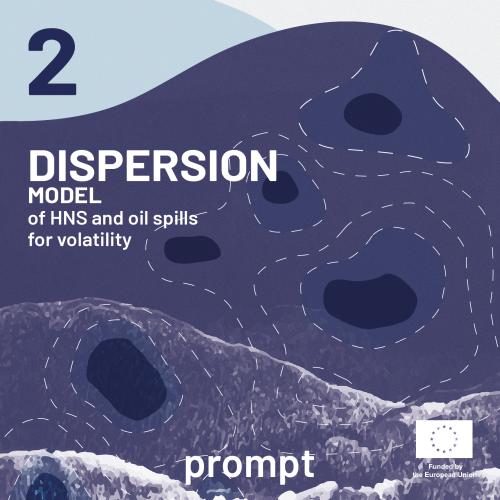02-Dispersion Model of HNS and Oil Spills for Volatility
And then we forge ahead to modelling the dispersion of HNS and Oil spills in order to determine their volatility status thanks to the inhouse expertise of the project consortium. A key aspect for an accurate numerical description of pollutant dispersion in the atmosphere is the physics parameterization in the Numerical Weather Prediction model.
In addition to microphysics schemes, turbulent motion plays a vital role in the transport process. Therefore, we use the innovative Planetary Boundary Layer (PBL) parameterization schemes, which is capable of accurately representing the transport of heat and moisture from surface to the free atmosphere. In this task, we employ atmospheric models at sub-kilometer resolution that allows accounting for both the above-mentioned parameters. This leads to the second phase of the task, that is pollutant dispersion.
Oil and HNS spills phenomena are analysed considering any possible environmental impact, including both marine pollution and atmospheric pollution related to gas emission of volatile compounds floating on sea surface. High resolution meteorological fields are used to drive atmospheric dispersion models able to describe the transport and diffusion of materials within the atmosphere using state-of-the-art numerical codes implementing different approaches.
Next, we replicate the second step of the previous task (01 modelling harbour waters for pollutant dispersion risk) and develop an operational forecast system for atmospheric oil and HNS dispersion based on the results of the simulations developed in the framework of the BE-READY project at the pilot sites (Tripoli and Aqaba). The system will be based on the TESEO model, which will be coupled to the NOAA’s HYSPLIT Atmospheric Transport and Dispersion Model to predict the HNS evolution in the atmosphere.
In conclusion, the second task of PROMPT involves the modelling dispersion of HNS and Oil spills to determine their volatility status. We employ atmospheric models at sub-kilometer resolution that allows accounting for both the microphysics schemes and Planetary Boundary Layer (PBL) parameterization schemes which are capable of accurately representing the transport of heat and moisture from surface to the free atmosphere. We then replicate modelling harbour waters for pollutant dispersion risk and develop an operational forecast system for atmospheric oil and HNS dispersion based on the results of the simulations developed in the framework of the BE-READY project at the pilot sites (Tripoli and Aqaba).
